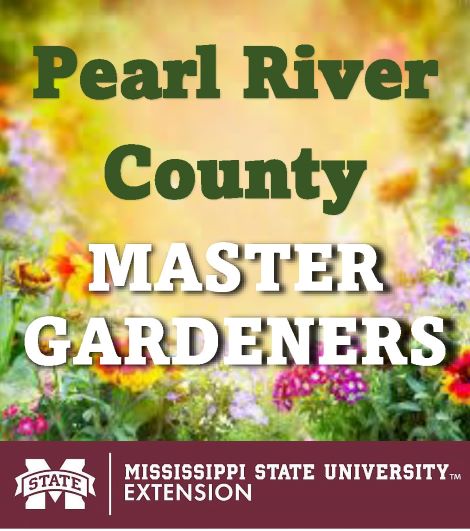
The Pearl River County Master Gardeners are not only busy planting seeds for plants, but also seeds of knowledge. Besides being recognized for their great contributions to the community, they also write articles that have been published in local newspapers and magazines. You can read some of the articles below.

Co-founder & Commercial Horticulturist, Bill Scheer, saw the power of volunteers in his home country of Germany and pressed WSU administration to pursue the Master Gardener program. Fifty years later, the need for science-based gardening information is more pressing than ever with our evolving climate, communities and needs.
#MasterGardenerVolunteer
Mississippi Magazine
Featuring the 2022 Mississippi Master Gardener Conference in Tupelo
Southern Senior Magazine
Winter 2023: Featuring one of the Pearl River County Master Gardeners!
Spring 2022: Featuring two Pearl River County Master Gardeners!
Winter 2022: Featuring two Pearl River County Master Gardeners!
Fall 2021: Featuring two Pearl River County Master Gardeners!

Herschel Rector’s Firewise Home Garden
How Firewise is Your Home?
Recently Pearl River County experienced a Mississippi Forestry Service (MFS) burn ban due to potential for wildfires. You can check for MFS alerts online at https://www.mfc.ms.gov/2022/02/statewide-wildland-fire-risk-alert-2/. The MFS reports that nationwide, nearly 9 out of 10 wildfires are human-caused and could have been prevented with proper care and caution. In Mississippi, escaped debris burns have been the leading cause of wildfires over the past several years. You may ask, “what can I do to protect my house from wildfires?” An important step is for the homeowner to learn about the Firewise program. The Firewise program equips homeowners and community leaders with the information they need to help design, construct, landscape, and maintain homes or communities to better withstand wildfires. This program is for anyone living in or connected to the Wildland Urban Interface. To learn more about the Firewise program, you may contact Orlando Ellerby, MFC Firewise Coordinator at oellerby@mfc.ms.gov. You, as a homeowner, can reduce your chances by getting a Firewise assessment completed. When done by a knowledgeable professional, this assessment will alert you to many things you may do to reduce the likelihood of a wildfire damaging or destroying your home. This assessment will alert you to actions you can do, such as removing fuel, clearing emergency access, and identifying your property to emergency personnel. For more information, you can contact your local county Extension Service Agent, Dr. Eddie Smith at 601-403-2280. By: Herschel Rector, MSU Pearl River County Master Gardener

Phyllis Goodwin’s Pollinator Garden
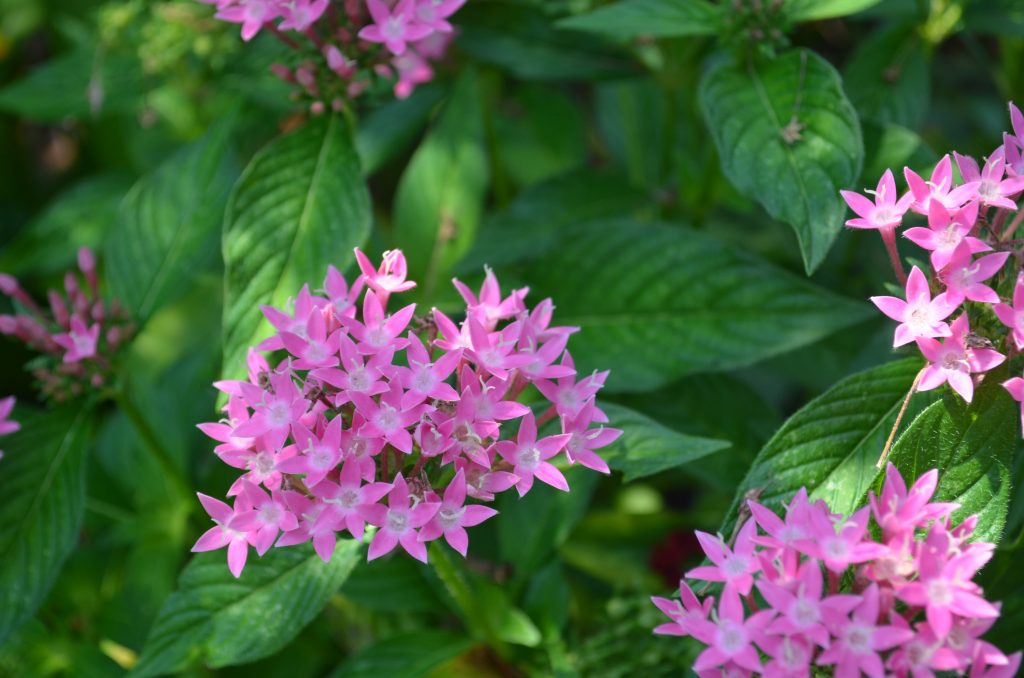

Pollinator Gardening
As a Pearl River County Master Gardener, my concern for the future of our native pollinators led me to my style of gardening. I like to offer as much nectar and pollen as I possibly can, with as many native plants as possible. Native plants hold up in the heat of our summers, usually require less water, and have more to offer to our local pollinators. My favorite pollinator garden is my raised bed filled with a good quality topsoil and enhanced with compost and manure. This year I have planted “Husker Red” Penstemon, Hyssop Blue, Cardinal Flower and Gulf Coast Penstemon to name a few. I like to use a timed-release fertilizer three times a year using the holidays, Easter, 4th of July and Labor Day as my reminders. I do have several in-ground gardens throughout my yard planted with more native plants. However, I have planted several non-native flowering plants such as Pentas, which are originally from Africa. I consider Penta plants a magnet for butterflies; they love them. Lantanas are another good choice and came to us by way of Mexico. When making an in-ground garden, I like to use half native soil and half garden soil. I also add compost and manure and then blend well. My native plants love this mixture. You don't need a large area to create a pollinator garden. All you need are a few pots on your patio with selective plants. The Master Gardener program has provided me many opportunities to see beautiful gardens and nurseries, meet great gardeners, learn volumes and serve the community. If you are interested learning more about the Master Gardener program, call 601-403-2280. Come join us and have fun! By: Phyllis Goodwin, MSU Pearl River County Extension Service Master Gardener

Teresa Covington’s Container Plants

The Fun of Gardening in Containers
My name is Teresa Covington, and I’m addicted to plants! It started when I was 12 and was given an arrowhead plant. I found out I could propagate the plant and make more plants, how wonderful! I gave the new plants to family members and told them how to take care of them. Using a spoon from the kitchen and digging soil from the yard, I worked with my plants. Flash forward to today, and I don’t even know how many containers of plants I have. I enjoy my flower beds and vegetable garden, but my containers are special to me. With containers you can grow plants that your zone will not support by protecting them or providing conditions needed. I like tropical plants that will not survive our winter, so I grow them in containers and protect them when needed. A new plant can be monitored for water needs and to see if it can handle true full sun or shade and can be moved if needed. Using the design technique thriller, filler and spiller, I make a lot of different combinations. By propagating some of my plants and protecting them in winter, I can save money. Every spring I bring my plants out, trim any dead parts, fertilize and make up my containers. I change plants around every year, so my containers are never the same. My best advice would be to make sure that all plants in a container have the same water and light needs. Combinations are unlimited. In 2020, I took the MSU Master Gardener training classes. Through the Master Gardener program I have gained a wealth of additional information on plant identification, new propagation techniques, pest control, and so much more. To join this great group of people, call the Pearl River County Extension office at 601-403-2280. By: Teresa Covington, MSU Pearl River County Extension Service Master Gardener

Carmen Ulfer’s Bog

Creating a Bog Landscape
I became a Master Gardener in 2017. That's what opened me up to native plants, their important role in the environment, and the idea of creating a bog and other natural landscapes. A bog landscape is easy to obtain if you have an area on your property that doesn't drain well. My bog is a natural branch that runs 250 feet across the front of the property with a 100 feet depth and starts just beyond the lawn. It was somewhat easy to transform 25,000 square feet of muck into the bog that I love. I removed most of the small loblolly pine trees (Pinus teada) that were in the area, along with an abundance of small Titi trees (Cryilla racemiflora), leaving two large ones as specimen plants in the bog. I placed three culverts so that the rainwater could continue to flow naturally and built golf cart trails that are passable most of the year. This allows easy access to each section of the bog to enjoy the native plants up close and serves as a firebreak when I burn the bog each year in late winter for a fresh flush of wildflowers in the spring. The Few-flower milkweed (Asclepias lanceolata), Joe Pye Weed (Eutrochium purpureum), and Boneset (Eupatorium perfoliatum) are a few of the native herbaceous perennials that keep the butterflies and many other pollinators in the bog area. There are many native grasses, perennials, and shrubs that have happened naturally. I was able to add many of my favorite natives from the Crosby Arboretum plant sales and my master gardener friends. A few natives that you may want to consider are Pond cypress (Taxodium ascendens), Buttonbush (cephalanthus occidentalis), and Switchgrass (Panicum vigatum). It's not difficult to have a native landscape in a corner of your yard. Simply leave it alone... there’s no need to protect anything through the winter or fertilize in the spring. Certainly, there is no need to weed. For more information about bogs or becoming a Master Gardener, contact the Pearl River County Extension Service at 601-403-2280. By: Carmen Ulfers, MSU Pearl River County Extension Service Master Gardener

Betsy Burk’s ADGD (Attention Deficit Gardening Disorder)
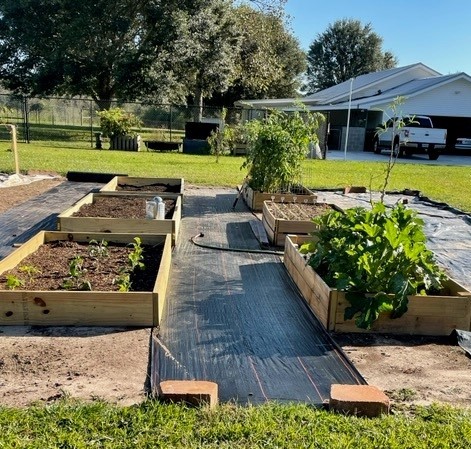
ADGD: Attention Deficit Gardening Disorder
Now, prior to Covid, I would watch the news, an occasional Netflix or just read a book. The only positive aspect that I can find with the pandemic is my return to gardening and my subsequent obsession with all things VEGETABLE. I also discovered that I may have ADGD (Attention Deficit Gardening Disorder). I’m beginning my fourth growing season this fall. I’ve gone from a small 30-foot x 50-foot row style garden area to two 30-foot x 50-foot row style plots to containers and now raised beds. To add more assuredly to my suspicions, I’m on about my third rendition of a custom raised bed structure that I’ve been designing and building myself. I have bounced from one potting soil medium to another. I have gone from store-bought in bags to bulk purchased from soil farms to personally devised mixtures of the above. I won’t bore you with my combinations of fertilizers, fertigation and other feeding habits for my veggies, nor will I scare you with my personal concoctions produced to kill the parasites that stalk my charges. I will own some of my scatter-shot approaches and rabbit-hole visiting. However, a good many of my adventures come from the hundreds of videos I watched and the myriad of opinions I considered from very well meaning and enthusiastic gardeners on YouTube. To save those of you who might relate to my pain, let me let you in on a secret I have found to solve 99% of my “trial by error” and organizational short comings: The Mississippi State Extension Service’s website. I will even drill down a bit further: THE SEARCH BOX in this site! This is a wonderful place to start if you have a single question, are new to gardening, an old pro or just someone who enjoys a beautiful lawn, majestic tree, or an abundant garden…and want one. Across the Mississippi State University Extension Service website are articles on every conceivable question about a garden, a lawn, or a tree from 50,000 foot overviews to a microscopic pathogen blowing up your prized heirloom tomato. Information is available in formats ranging from video to PDF. These materials are fact based from scientist not your amateur “YouTuber” looking for a thumbs up. Here are a few examples: It’s December and you may or may not have a garden in production. What do you need to be doing in your yard, your flower beds or in your languishing vegetable plots? Check out “Calendar of Home Gardening Chores in Mississippi” (P3437). Your pruners and loppers are stacked in the shed so dull they couldn’t cut butter in the middle of August. Check out the video “Sharpening Your Garden Tools.” Want to plant some of your own Blueberry bushes, a Citrus Orchard, or a Pecan Grove? There is an entire library of information contained in the “Fruits and Nuts” publication and blog. To conclude, save yourself a ton of confusion. Avoid the unnecessary stress of knowing what information is accurate and what is just show-biz. Look to the pros to optimize success, to save valuable time, conserve treasure and for many of us, stay organized. Gardening requires persistence; but gardening is so much fun, and it is so personally rewarding to see or taste your hard-earned labors. Avoid circling the global information superhighway for knowledge that is super easy to access right here in your own backyard. If you enjoy gardening and the company of others who also enjoy gardening, check with your local county Extension Service office about the Master Gardener classes that are offered by MSU. By: Betsy Burk, MSU Pearl River County Extension Service Master Gardener Intern

Roxann Gort’s Butterfly Way Station

Starting a Monarch Butterfly Way Station
When starting a Monarch butterfly garden, there are many points to consider. Those first decisions will have a big impact on your butterfly garden success. One of the first steps I took was to look up my USDA Plant Hardiness Zone for where I live. I am in Zone 8b, and that lets me know what plants are appropriate to plant in my garden. Next, I constructed a raised bed 14-foot x 48-foot in an area that was part shade and part sun. I tested the soil and amended per the soil test report. You can have your soil tested with the help of your Extension office. I used our Pearl River County Extension office located in Poplarville. For plants with uncommon soil requirements, you can amend the soil in that area specifically for those plants. I planned what plants to use in a design layout. Think about future expansion when designing your garden. Before planting, I researched what plants to use to create a Monarch Waystation. Gardeners have hundreds of choices of host/nectar plants for butterflies. A few that I chose are Joe Pye weed, butterfly bushes, lantana, verbena, foxglove, pentas, gomphrena, zinnia, Black Eye Susan and Abelia bush. Butterflies also need a source of food. Milkweed is a required host plant for Monarch butterfly caterpillars (females lay their eggs on them). The nectar in the milkweed provides valuable food for butterflies, bees and other pollinators. Monarch caterpillars feed exclusively on the leaves of the milkweed. I completed my garden by adding fennel which will attract the black swallowtail and parsley, which is a great source of nectar if given the chance to flower. My butterfly garden is registered and certified with Monarch Watch, a non-profit organization that conducts research that promotes the conservation of Monarch butterflies. I wanted to help the Monarchs reproduce and have a habitat for them to survive. Becoming a Pearl River County Master Gardener has helped me tremendously. I have grown and learned so much. Attending other Monarch Waystations and learning about the life cycle of butterflies is what sparked my interest in planting my butterfly garden. If you are interested in learning more about the Master Gardener program, call 601-403-2280. By: Roxann Gort, MSU Pearl River County Extension Service Master Gardener
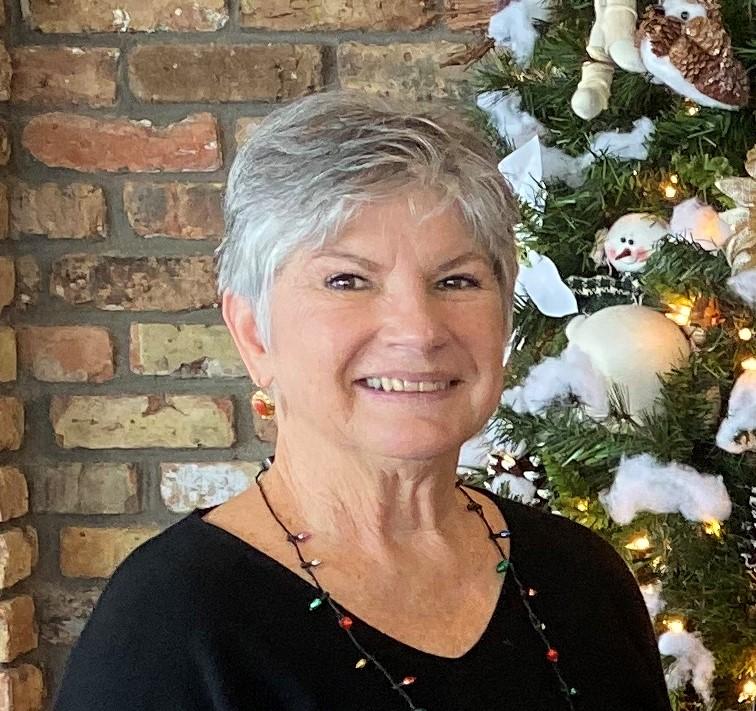
Bertha Page’s Water Garden

Trying My Hand at Building A Water Garden
My passion for gardening began as a little girl while helping my grandfather with his vegetable garden. That was decades ago, but the passion for gardening still remains. Although I only grow a few vegetables now, usually mixed in with my flowers, I still like to get my hands in the dirt. I prefer what is called a cottage garden, which allows me to have a variety of shrubs and flowers. You never know what you will find around a garden path. It could be blueberries and eggplant all mixed in with zinnias and coneflowers. During the Covid quarantine, my gardening has been extended to include a 1500 gallon water garden. That has led me to explore plants used in and around my water garden. Surprisingly, I found that many of my “flower garden” plants adapted well to my “water garden”. Louisiana iris (Iris fulva), swamp milkweed (Asclepias milkweed), taro or elephant ear (Variegatum monstrosum), creeping jenny (Lysimachia nummularia) and sweet flag iris (Acorus calamus) just to name a few. Then come the water plants, parrots feather (Myriophyllum aquaticum) and water lilies (Nyphaeaceae). All of these plants are lovely, floating just on the water’s surface. My favorites are the water lilies, with the variety of colors and sizes in which they come. Floating plants provide shade and protection for fish and help control algae but shouldn’t be allowed to multiply out of control. No more than 60% of the water surface should be covered with plants, because oxygen enters the water where it is met with air. Floating plants also provide natural filtration of the water. Marginal water garden plants are best planted in unscented, non-clumping kitty litter (which is clay) and covered with sand and pea gravel or flat stones. Koi like to nose around the surface of pots. Stones will deter them from uprooting the plants. Also, a fertilizer made especially for water plants is recommended. Monitoring the pH of the water garden is important. 6-8.5 is acceptable pH. If the water is too acidic, it can stress both the plants and fish. All of this sounds like a lot of work, and I won’t lie, it is. However, it is so worth the effort, just like in my cottage garden. See, the real jewels of my water garden are the goldfish and koi for flashes of orange and yellow that mimic the blooms in my cottage garden. Since retirement, I have taken the MSU Master Gardener course and am now proud to say I am a MSU Master Gardener of Pearl River County and just this year have become a Louisiana State University Advanced Master Gardener. If you are interested learning more about the Master Gardener program, call 601-403-2280. Come join us and have fun! All that being said, I still just like getting my hands in the dirt and now water, too! By: Bertha Page, MSU Pearl River County Extension Service Master Gardener
Eileen E. Hollander’s Garden
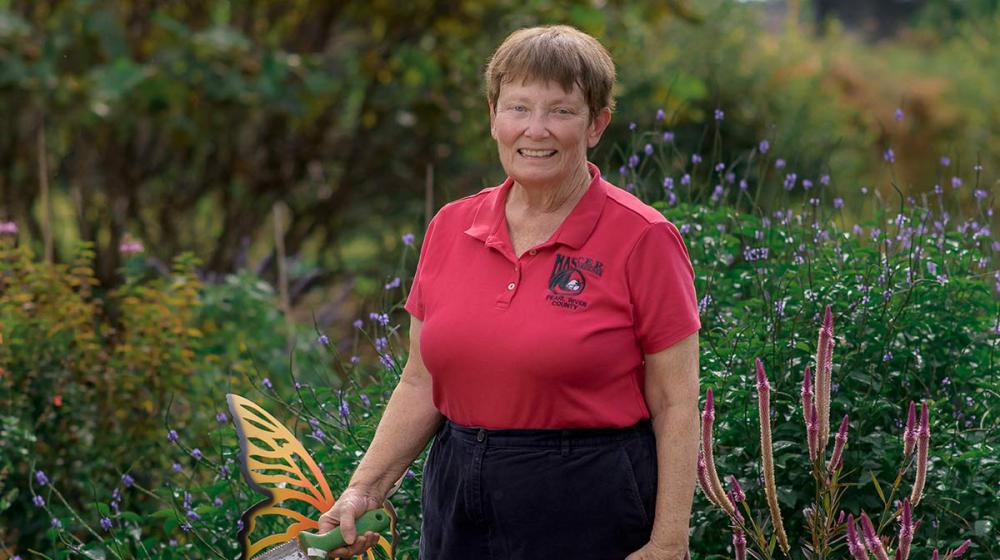
Eileen E. Hollander’s Garden
Gardens are ephemeral. Mine has changed significantly over time. Today my garden is constantly evolving. About twenty years ago, when I acquired my home and garden in Poplarville Mississippi, I took the MSU classes and became a knowledgeable Pearl River Master Gardener (PRCMG). Initially, two clumps of pampas grass were at the corner of my single-story brick home and no plants were in the north-facing front. Four willow oaks dropping branches surrounded the back. A thorny rose greeted us on the east where the driveway enters the house. Large azaleas and camellias were in the distance on the East side of the driveway. Barren 10-foot-tall blueberry bushes, an apple tree and a pear tree were in the background on the west side of the house. In short, the only plant not in decline was a large fig bush on the south side of my house. Tall bahiagrass dominated. During one PRCMG meeting at the Crosby Arboretum, Pat Drackett suggested plants that would make my entrance more inviting. I planted azaleas in front, moved the pampas grass to the north property border, replaced the rose with gardenias and installed a blueberry hedge. The old blueberries were rejuvenated by cutting them to 3 feet. and fertilizing. Hurricane Katrina removed all but one of the willow oaks. Then two tornados took the other declining trees. During PRCMGs visits, Dr. Eddie Smith demonstrated planting pear trees, Reggie Davis guided building a muscadine trellis and Dr. Eric Stafne taught pruning pecan, pear and muscadines. Master Gardeners provide many opportunities to see beautiful gardens and nurseries, meet great gardeners, learn volumes and serve the community. If you are interested learning more about the Master Gardener program, call 601-403-2280. Come join us and have fun! By: Eileen Hollander, MSU Pearl River County Extension Service Master Gardener

Kay Cline’s Daylilies

Growing Daylilies Locally
I've enjoyed growing daylilies for over two decades. Modern daylilies have evolved from orange or yellow trumpet shaped flowers to more than 80 thousand registered cultivars. The colors and forms are impressive. The latest trends are extended green throats, blue eyes, patterns and toothy edges. The American Daylily Society has a database of all the registered daylilies. Some of my favorite things about growing daylilies are: 1. By growing different reblooming varieties, I extend the bloom season from early spring through late summer. 2. My garden looks different every day. A bloom last only one day; however, there are many blooms on a single daylily scape that open over a few weeks span. 3. Daylilies can be easily cross pollenated, and every seed creates a different looking flower. 4. I enjoy participating in daylily clubs, photographing them and competing in local daylily shows. You can plant daylilies in raised beds amended with pine fines or compost. Mulching twice a year with pine bark, pine straw or leaves will help retain moisture and reduce weeding. Fertilize in early spring with a 3-1-2 ratio (I like Graco 16-4-10 timed release). Daylilies like a soil pH of 6.7. I add pelletized lime every couple of years. Inexpensive soil tests are available from the Mississippi State University Extension Service and are recommended. Water with 1-2 inches per week. Bed borders are important to keep our aggressive southern grasses and weeds at bay. A minimum of 6 hours of sun is needed. Avoid areas with competing roots. The MSU Master Gardener program has helped me gain more knowledge on many gardening topics. If you are interested learning more about the Master Gardener program, call 601-403- 2280. By: Kay Cline, MSU Pearl River County Extension Service Master Gardener